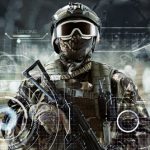 Weird Stuff
Weird Stuff  Weird Stuff
Weird Stuff  Movies and TV
Movies and TV 10 Filmmakers Who Attacked Their Audience
 History
History 10 Times the U.S. Government Formally Apologized
 Weird Stuff
Weird Stuff 10 Unique Ways People Became Ridiculously Rich
 Politics
Politics 10 Things You May Not Know about the Watergate Scandal
 Technology
Technology Layer by Layer: 10 Revolutionary Advances in 3D Printing
 Food
Food 10 Ridiculous Myths about Dodgy Stuff in Your Food and Drink
 History
History The Ten Worst Generals in the History of Warfare
 Movies and TV
Movies and TV 10 Behind-the-Scenes Facts about Iconic Deaths in Horror Movies
 Mysteries
Mysteries 10 Incredibly Complex Mysteries Solved by Ordinary People
 Weird Stuff
Weird Stuff 10 Outrageous Vehicles and Eccentric Drivers
 Movies and TV
Movies and TV 10 Filmmakers Who Attacked Their Audience
 History
History 10 Times the U.S. Government Formally Apologized
Who's Behind Listverse?

Jamie Frater
Head Editor
Jamie founded Listverse due to an insatiable desire to share fascinating, obscure, and bizarre facts. He has been a guest speaker on numerous national radio and television stations and is a five time published author.
More About Us Weird Stuff
Weird Stuff 10 Unique Ways People Became Ridiculously Rich
 Politics
Politics 10 Things You May Not Know about the Watergate Scandal
 Technology
Technology Layer by Layer: 10 Revolutionary Advances in 3D Printing
 Food
Food 10 Ridiculous Myths about Dodgy Stuff in Your Food and Drink
 History
History The Ten Worst Generals in the History of Warfare
 Movies and TV
Movies and TV 10 Behind-the-Scenes Facts about Iconic Deaths in Horror Movies
 Mysteries
Mysteries 10 Incredibly Complex Mysteries Solved by Ordinary People
10 Incredible Stories That Belong in the U.S. National Archives
When we think about the National Archives, the big moments come to mind—like signing the Declaration of Independence or landing on the Moon. But tucked away, some stories aren’t as well-known, yet they’ve quietly influenced our world in unexpected ways.
Take Dave Cutler, for instance. You might not know his name, but his work at Microsoft laid the groundwork for much of today’s technology. Or the mysterious disappearance of the USS Cyclops—how does an entire ship just vanish, leaving behind nothing but questions? And then there’s the heartwarming mission to save the Lipizzaner stallions during World War II, a daring act of cultural preservation that’s as heroic as it is underappreciated.
These aren’t just interesting anecdotes—they’re the kinds of stories that make you stop and wonder, “Why didn’t I know about this?” They might not be household names, but they’ve left their mark on history. And that’s why they deserve a spot in the National Archives, to be remembered and appreciated for the remarkable tales they are.
Related: 10 Puzzling Unsolved Mysteries from Ancient History
10 The Hanford Site: America’s Hidden Nuclear Frontier
Tucked away in southeastern Washington, the Hanford Site played a crucial but secretive role in America’s nuclear ambitions during World War II and the Cold War. Spanning 586 square miles (1,518 square kilometers), Hanford was responsible for producing nearly two-thirds of the nation’s plutonium, fueling the bombs that helped end World War II and drove the nuclear arms race. For decades, thousands of workers labored in secrecy, many unaware of the true impact of their work as the U.S. government pushed the boundaries of science in the name of national security.
But this relentless pursuit came at a steep cost. Hanford left behind a toxic legacy, with 450 billion gallons (375 billion imperial gallons) of radioactive waste discharged into the soil, endangering the environment and the nearby Columbia River. Today, Hanford is the focus of one of the largest environmental cleanup efforts in history—a complex and ongoing mission to undo the damage of the past while safeguarding the future.
The story of Hanford is more than just a chapter in the history of nuclear technology; it’s a cautionary tale about the unforeseen consequences of progress. Preserving this story in the National Archives ensures that future generations can learn from both the triumphs and the tragedies of America’s nuclear frontier.[1]
9 The Mysterious Disappearance of the USS Cyclops
In March 1918, the USS Cyclops, the largest ship in the U.S. Navy at the time, set sail from the West Indies to Baltimore, loaded with 306 crew members and 11,000 tons of manganese ore crucial for the war effort. The Cyclops had weathered many voyages since its launch in 1910, but this journey would be its last. Despite a final message that all was well—”Weather Fair, All Well”—the ship and everyone aboard vanished without a trace, disappearing somewhere within the enigmatic Bermuda Triangle.
Theories about the Cyclops’s fate are as vast as the ocean it crossed. Some suggest it fell victim to a German submarine, a plausible theory given the ship’s strategic cargo and the ongoing World War. Others speculate that structural issues or a sudden mechanical failure might have doomed the vessel, while more imaginative minds point to supernatural forces. Yet, no distress signal was ever received, and despite exhaustive searches, not a single piece of the ship has ever been recovered.
Over a century later, the disappearance of the USS Cyclops remains one of the greatest unsolved mysteries in naval history. The complete absence of wreckage and the eerie silence from the ship continue to puzzle historians and haunt the families of those lost. This story, filled with unanswered questions and deep historical significance, undeniably deserves a place in the National Archives, ensuring that the legacy of the Cyclops and its crew is never forgotten.[2]
8 The Revolutionary Creation of the Artificial Kidney by Willem Kolff
Amid the turmoil of World War II, Dutch physician Willem Kolff was determined to save lives from kidney failure—a condition that was nearly always fatal. Using whatever materials he could find, including wooden drums and cellophane tubing, Kolff crafted the first artificial kidney in 1943. Despite many initial setbacks, his relentless effort paid off when he extended the life of a patient on the brink of death, a groundbreaking achievement that marked the dawn of modern dialysis.
After the war, Kolff shared his invention with researchers in England, Canada, and the United States, sparking a global revolution in kidney treatment. In 1950, he brought his expertise to the Cleveland Clinic, where he continued refining his invention, paving the way for the widespread use of dialysis that has since saved millions.
Kolff’s invention didn’t just extend lives—it offered hope where there had been none. His work transformed a once-deadly diagnosis into a manageable condition, leaving a legacy that continues to save lives today. This profound contribution to medicine undoubtedly deserves a place in the National Archives.[3]
7 Dave Cutler’s Lasting Impact on Modern Computing
Dave Cutler might not be a household name, but his work has quietly shaped the digital landscape we navigate every day. Beginning in the 1970s with the development of the VMS operating system at Digital Equipment Corporation (DEC), Cutler established himself as a visionary engineer. His move to Microsoft in 1988 marked the beginning of his most influential project: Windows NT. This operating system, which underpins all major versions of Windows since 1993, became the backbone of modern computing, affecting billions of users worldwide.
Cutler’s engineering philosophy was a rare blend of hardware and software mastery, resulting in systems known for their reliability, security, and scalability. His influence extended beyond Windows; at Microsoft, he played a pivotal role in the development of Azure, laying the groundwork for the cloud infrastructure that supports countless businesses today. His contributions to the Xbox One, particularly the hypervisor that expanded the console’s capabilities, further demonstrate his ability to push the boundaries of technology.
While Cutler may not seek the spotlight, his impact on computing is profound and enduring. His story exemplifies the power of innovation that quietly but significantly shapes the world, making it a narrative worthy of preservation in the National Archives.[4]
6 The Tragic Legacy of the Radium Girls
In the early 20th century, the allure of glow-in-the-dark watches captivated the public. At the heart of this innovation were the Radium Girls, young women who painstakingly applied luminous paint to watch dials, unaware of the deadly poison they were ingesting with each brushstroke. The paint, infused with radium, was touted as a miracle substance, but its dangers were largely unknown—or worse, deliberately downplayed by the companies profiting from it.
These women, encouraged to make their brushes pointed at the end with their lips, were slowly poisoned as the radium seeped into their bones. The first signs of trouble appeared as toothaches and fatigue, but soon, the devastating effects of “radium jaw” set in, literally disintegrating their bones from within. Despite mounting deaths, the United States Radium Corporation refused to acknowledge the dangers, forcing the Radium Girls to wage a desperate battle for justice.
Their courage led to a landmark legal victory in 1928, forever changing occupational hazard laws. The Radium Girls’ fight not only exposed the lethal risks of radium but also laid the groundwork for safer working conditions, making their story a crucial chapter in labor history that resonates to this day.[5]
5 Saving the Lipizzaners: American Cowboys Ride to the Rescue
As World War II drew to a close in April 1945, the 2nd Cavalry Group (Mechanized) was tasked with a remarkable mission amid the widespread devastation. The Lipizzaner horses, prized for their elegance and a symbol of centuries-old cultural heritage, had been relocated to Hostau, Czechoslovakia, by the Germans to shield them from Allied bombings and the advancing Soviet forces. Colonel Charles Hancock Reed, an ardent horse lover, discovered their plight and saw an opportunity to restore beauty to a world ravaged by war.
The mission, dubbed Operation Cowboy, required delicate negotiations and a leap of faith. Reed and his men, driven by a shared respect for the Lipizzaners’ historical significance, engaged in secret talks with German commandant Lieutenant Colonel Hubert Rudofsky. Despite the backdrop of conflict, their common purpose enabled an unprecedented collaboration, showcasing the horses’ profound value beyond mere wartime strategy.
With incredible stealth and determination, the Americans successfully transported the Lipizzaners across enemy lines to safety. In a world overwhelmed by destruction, this mission preserved a noble tradition, offering a beacon of hope and cultural continuity. The rescue was not just a triumph of logistics but a testament to the enduring human spirit amidst chaos.[6]
4 The Secret Bunker Beneath The Greenbrier
Hidden deep within the West Virginia mountains, The Greenbrier Resort conceals an extraordinary Cold War relic: a vast underground bunker built to safeguard the U.S. Congress. Conceived by President Dwight D. Eisenhower and constructed between 1958 and 1961, this 112,544-square-foot (10,457-square-meter) facility was designed to accommodate all 535 members of Congress in the event of a nuclear attack. The bunker’s existence remained a closely guarded secret until its declassification.
In a dramatic and unprecedented reveal, The Today Show ventured into the bunker, capturing exclusive footage of its stark, utilitarian design. NBC’s Kerry Sanders and his team explored previously off-limits areas, showcasing the bunker’s original furnishings, ventilation systems, and emergency provisions. Interviews with Greenbrier Historian Bob Conte and Ambassador Frank Mosley provided insight into the bunker’s intricate security measures and its role in Cold War strategy.
Now, the once-secret facility has been transformed into a fascinating historical tour, offering visitors a rare glimpse into Cold War-era preparedness and the legacy of a hidden chapter in American history.[7]
3 The Vengeful Fallout: Japan’s Retaliation for the Doolittle Raid
On April 18, 1942, Lt. Col. Jimmy Doolittle led 16 American bombers in a daring raid over Tokyo, striking key Japanese industrial targets as revenge for Pearl Harbor. This audacious mission, launched from the U.S. aircraft carrier Hornet, aimed to boost American morale and demonstrate that Japan was vulnerable to attacks. After the raid, most of the crew members, running low on fuel, crash-landed or bailed out in Free China, where they were rescued by local villagers, guerrillas, and missionaries.
However, the kindness of the Chinese rescuers sparked a brutal response from the Japanese military. In retaliation, the Japanese Imperial Army launched a savage campaign against Chinese civilians and villages, resulting in widespread atrocities and suffering. This brutal crackdown was intended to deter further assistance to Allied airmen and exact revenge for the raid that had humiliated Japan on its home soil.
The Doolittle Raid’s impact extended far beyond its immediate military objectives, highlighting the harsh consequences faced by those who aided the Allied forces during wartime. The raid remains a powerful symbol of courage and the complex interplay of military actions and civilian suffering.[8]
2 The Axe Murders that Shook the DMZ
On August 18, 1976, the Korean Demilitarized Zone (DMZ) witnessed a shocking escalation of hostilities when North Korean soldiers brutally killed two U.S. Army officers, Captain Arthur Bonifas and Lieutenant Mark Barrett, with axes. The officers were conducting a routine operation to remove a poplar tree that obstructed visibility between checkpoints in the Joint Security Area (JSA). This unprovoked attack on American personnel in the highly tense DMZ area threatened to ignite a larger conflict.
In a calculated response, the United States initiated Operation Paul Bunyan on August 21, 1976. This massive show of force aimed to address the incident while avoiding further violence. A convoy of heavily armed U.S. and South Korean troops, supported by tanks and aircraft, was mobilized to the site. Under intense scrutiny and with a formidable military presence, soldiers used chainsaws to fell the offending tree, while the perimeter was fortified to prevent any North Korean interference.
Operation Paul Bunyan successfully removed the tree and sent a powerful message of deterrence without escalating the conflict. By demonstrating their resolve through a strategic display of force, the U.S. and South Korean forces reinforced their commitment to maintaining peace and order in one of the world’s most heavily fortified and sensitive regions. The operation remains a striking example of how military precision and diplomatic restraint can coexist in addressing international tensions.[9]
1 The Ghost Army: Deception Masters of World War II
Activated on January 20, 1944, the 23rd Headquarters Special Troops, known as the “Ghost Army,” was a pioneering unit in military deception. With a modest force of just over 1,000 men, this elite group, commanded by Colonel Harry L. Reeder, was capable of simulating the presence of two entire divisions—around 30,000 troops. Employing a blend of inflatable tanks, deceptive radio traffic, and sound effects, the Ghost Army executed operations that misled German forces, contributing significantly to the Allied war effort.
One notable operation was the deception during the Battle of the Bulge, where the Ghost Army’s fake radio traffic and inflatable tanks convinced the Germans of a larger Allied force than was actually present. The unit’s creative tactics, including phony generals and elaborate visual illusions, played a crucial role in protecting Allied troops and facilitating strategic maneuvers across Europe.
The National WWII Museum’s special exhibit, “Ghost Army: The Combat Con Artists of World War II,” delves into this unique unit’s remarkable achievements. Featuring artifacts like inflatable tanks and detailed accounts of their deceptions, the exhibit showcases how the Ghost Army’s ingenuity and bravery helped shape the outcome of the war.[1]








